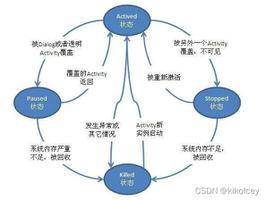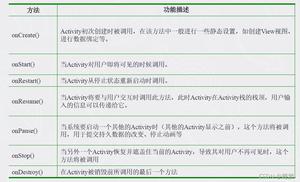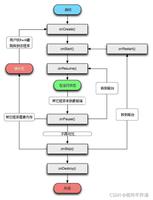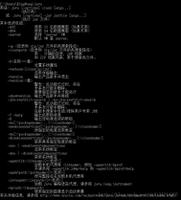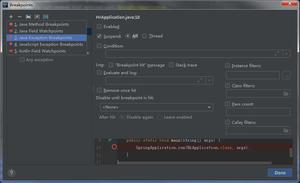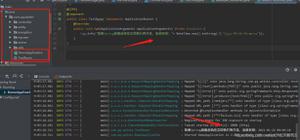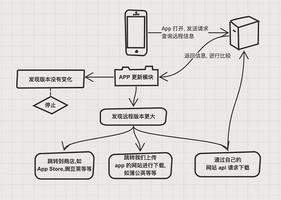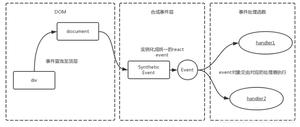React中LifeCycle生命周期详解

如图,可以把组件生命周期大致分为三个阶段:
第一阶段:是组件第一次绘制阶段,如图中的上面虚线框内,在这里完成了组件的加载和初始化;
第二阶段:是组件在运行和交互阶段,如图中左下角虚线框,这个阶段组件可以处理用户交互,或者接收事件更新界面;
第三阶段:是组件卸载消亡的阶段,如图中右下角的虚线框中,这里做一些组件的清理工作。
更新方式(触发render的4条路径)
在react中,触发render的有4条路径。
以下假设shouldComponentUpdate都是按照默认返回true的方式。
1、首次渲染Initial Render
2、调用this.setState (并不是一次setState会触发一次render,React可能会合并操作,再一次性进行render)
3、父组件发生更新(一般就是props发生改变,但是就算props没有改变或者父子组件之间没有数据交换也会触发render)
4、调用this.forceUpdate
下面是我对React组件四条更新路径地总结:
代码如下
class LifeCycle extends React.Component {
constructor(props) {
super(props);
alert("Initial render");
alert("constructor");
this.state = {str: "hello"};
}
componentWillMount() {
alert("componentWillMount");
}
componentDidMount() {
alert("componentDidMount");
}
componentWillReceiveProps(nextProps) {
alert("componentWillReceiveProps");
}
shouldComponentUpdate() {
alert("shouldComponentUpdate");
return true; // 记得要返回true
}
componentWillUpdate() {
alert("componentWillUpdate");
}
componentDidUpdate() {
alert("componentDidUpdate");
}
componentWillUnmount() {
alert("componentWillUnmount");
}
setTheState() {
let s = "hello";
if (this.state.str === s) {
s = "HELLO";
}
this.setState({
str: s
});
}
forceItUpdate() {
this.forceUpdate();
}
render() {
alert("render");
return(
<div>
<span>{"Props:"}<h2>{parseInt(this.props.num)}</h2></span>
<br />
<span>{"State:"}<h2>{this.state.str}</h2></span>
</div>
);
}
}
class Container extends React.Component {
constructor(props) {
super(props);
this.state = {
num: Math.random() * 100
};
}
propsChange() {
this.setState({
num: Math.random() * 100
});
}
setLifeCycleState() {
this.refs.rLifeCycle.setTheState();
}
forceLifeCycleUpdate() {
this.refs.rLifeCycle.forceItUpdate();
}
unmountLifeCycle() {
// 这里卸载父组件也会导致卸载子组件
React.unmountComponentAtNode(document.getElementById("container"));
}
parentForceUpdate() {
this.forceUpdate();
}
render() {
return (
<div>
<a href="javascript:;" className="weui_btn weui_btn_primary" onClick={this.propsChange.bind(this)}>propsChange</a>
<a href="javascript:;" className="weui_btn weui_btn_primary" onClick={this.setLifeCycleState.bind(this)}>setState</a>
<a href="javascript:;" className="weui_btn weui_btn_primary" onClick={this.forceLifeCycleUpdate.bind(this)}>forceUpdate</a>
<a href="javascript:;" className="weui_btn weui_btn_primary" onClick={this.unmountLifeCycle.bind(this)}>unmount</a>
<a href="javascript:;" className="weui_btn weui_btn_primary" onClick={this.parentForceUpdate.bind(this)}>parentForceUpdateWithoutChange</a>
<LifeCycle ref="rLifeCycle" num={this.state.num}></LifeCycle>
</div>
);
}
}
ReactDom.render(
<Container></Container>,
document.getElementById('container')
);
参考文档: https://www.jianshu.com/p/4784216b8194
https://www.cnblogs.com/chunlei36/p/6415582.html
以上是 React中LifeCycle生命周期详解 的全部内容, 来源链接: utcz.com/z/384069.html

